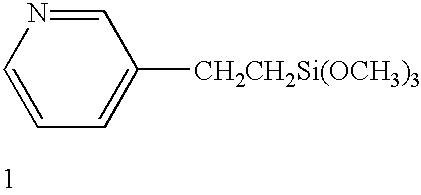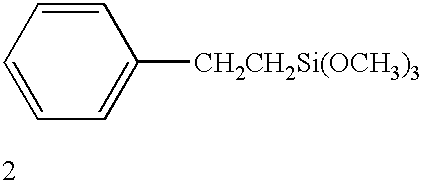Self-assembled near-zero-thickness molecular layers as diffusion barriers for Cu metallization
- Summary
- Abstract
- Description
- Claims
- Application Information
AI Technical Summary
Problems solved by technology
Method used
Image
Examples
Embodiment Construction
[0016] Devising ultra-thin barrier layers to prevent Cu diffusion into SiO.sub.2-based dielectrics is a major challenge that must be met to increase the speed, number density, and performance of microelectronics devices. Here, we demonstrate the use of near-zero-thickness (<2-nm-thick) self-assembled monolayers (SAMs) as barriers to Cu diffusion into SiO.sub.2. Cu / SiO.sub.2 / Si(001-metal-oxide-semiconductor (MOS) capacitors, with and without SAMs at the Cu / SiO.sub.2 interface, were annealed at 200.degree. C. in a 2 MV cm.sup.-1 electrical field. Capacitance-voltage (C-V) and current-voltage (I-V) measurements of MOS capacitors coated with SAMs having aromatic terminal groups consistently show as much as 5-orders-of-magnitude lower leakage currents and a factor-of-4 higher time to failure when compared with the corresponding values from uncoated interfaces. SAMs with short tail lengths or aliphatic terminal groups are ineffective in hindering Cu diffusion, indicating that the molecula...
PUM
 Login to View More
Login to View More Abstract
Description
Claims
Application Information
 Login to View More
Login to View More - R&D
- Intellectual Property
- Life Sciences
- Materials
- Tech Scout
- Unparalleled Data Quality
- Higher Quality Content
- 60% Fewer Hallucinations
Browse by: Latest US Patents, China's latest patents, Technical Efficacy Thesaurus, Application Domain, Technology Topic, Popular Technical Reports.
© 2025 PatSnap. All rights reserved.Legal|Privacy policy|Modern Slavery Act Transparency Statement|Sitemap|About US| Contact US: help@patsnap.com



